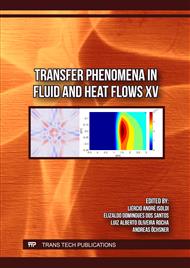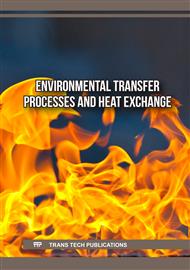[1]
ANTT, Manual de Fiscalização do Transporte Rodoviário Nacional e Internacional de Produtos Perigosos, Agência Nacional de Transportes Terrestres, Brasília, 2020. Available at: http://tri-leg.antt.gov.br/OutrosDocumentos/SGT5_2020_ACTA02_ANE08_ES_ManualFiscaliza%C3%A7%C3%A3oTRPP%204%C2%AA%20Edi%C3%A7%C3%A3o.pdf.
DOI: 10.21207/2675-0104.2018.800
Google Scholar
[2]
ABIQUIM, Manual para atendimento de emergências com produtos perigosos, Associação Brasileira da Indústria Química, São Paulo, 1999. 340 p.
Google Scholar
[3]
M. A. Pomares et al., GUÍA OPERATIVA: Actuaciones con amoniaco para bomberos, Sts Protección, Espanha, vol. 1, 2019. 146 p. Available at: https://www.sts-proteccion.com/documentos/GUIA-AMONIACO-BOMBEROS.pdf. Accessed on: 29 May 2022.
Google Scholar
[4]
O. L. G. Maioli, G. N. D. Nascimento, Composição da Atmosfera, Ciclos Globais e Tempo de Vida, Universidade Federal do Espírito Santo, Departamento de Engenharia Ambiental, Vitória, 2005. Available at: http://www.inf.ufes.brTrabalho_Gil_e_Otavio. Accessed on: 10 November 2022.
DOI: 10.24873/j.rpemd.2023.03.1051
Google Scholar
[5]
R. Jones et al., Areal Locations of Hazardous Atmospheres. 5.4.4: Technical Documentation, U.S. Dept. of Commerce, NOAA Technical Memorandum NOS OR&R 43, Seattle: Emergency Response Division (NOAA), 2013. 96 p. Available at: https://response.restoration.noaa.gov/sites/default/files/ALOHA_Tech_Doc.pdf. Accessed on: 20 November 2022.
Google Scholar
[6]
T. Spicer, J. Havens, Application of dispersion models to flammable cloud analysis, Journal of Hazardous Materials, vol. 49, November 1996, p.115–124.
DOI: 10.1016/0304-3894(96)01765-7
Google Scholar
[7]
NOAA, Monthly Global Climate Report for December 2021, National Centers for Environmental Information, January 2022. Available at: https://www.ncei.noaa.gov/access/monitoring/monthly-report/global/202200. Accessed on: 19 June 2024.
Google Scholar
[8]
E. Palazzi et al., Diffusion from a steady source of short duration, Atmospheric Environment, vol. 16, 1982, p.2785–2790. Available at: https://www.sciencedirect.com/science/article/abs/pii/0004698182900294.
DOI: 10.1016/0004-6981(82)90029-4
Google Scholar
[9]
F. Pasquill, The estimation of the dispersion of windborne material, The Meteorological Magazine, vol. 90, no. 1,063, February 1961. Available at: https://archive.org/details/sim_meteorological-magazine_1961_90_index. Accessed on: 19 June 2024.
Google Scholar
[10]
EPA, Access Acute Exposure Guideline Levels (AEGLs) Values - Acute Exposure Guideline Levels, United States Environmental Protection Agency, USA, 1999. Available at: https://www.epa.gov/aegl/access-acute-exposure-guideline-levels-aegls-values. Accessed on: 19 June 2024.
DOI: 10.3320/1.2758155
Google Scholar
[11]
S. Fontanive, Estudo de análise de risco do cloro em estações de tratamento de água, M.Sc. dissertation, Universidade Federal do Paraná, Curitiba, 2005. 182 p. Available at: https://acervodigital.ufpr.br/handle/1884/10309. Accessed on: 10 March 2021.
DOI: 10.32811/25954482-2020v3n1p51
Google Scholar
[12]
Final Risk Assessment Report for the FutureGen Project Environmental Impact Statement, Contract No. DE-AT26-06NT42921, April 2007. Available at: https://www.energy.gov/sites/prod/files/EIS-0394-DEIS-RiskAssessmentReport-2007.pdf.
Google Scholar



